Let's Talk
- About Birthdays: What makes our birthday a special day? What celebrations do we desire? What activities and events do we want? What gifts have we received or wish to receive?
- About Love and Care: How do we feel when everyone collaborates to make us happy? How do we feel when we care for others and prepare surprises for them? We can recall enjoyable moments when our loved ones surprised us and we can discuss different ways to express love. We may agree on a daily or weekly activity to add a special touch to our lives, such as preparing a meal together, reading stories, playing together, and visiting grandparents. What else can we do?
- About Collaboration: The family members collaborate and share tasks, making their child’s day joyful. We can think about the roles each of us can take to help and make others happy.
Let’s Enrich our language
- We read the story and explain the meanings of new vocabulary. We can pause at scenes and describe the drawings.
- Creating a card for our family: We can add our names and a picture that brings us together, or some words of thanks and love. We can color and decorate it, then hang it in a special place in our home.
Let’s Sing
We can learn poems and songs about birthdays, love, and family. We can repeat them and perform suitable movements alongside it.
Let’s Create:
We can prepare a surprise for one of the family members. What can we choose? We can think about what they like or need, tailoring the surprise to them. We may agree to make every weekend a special day for one family member.
Let’s Play
What if we exchanged roles for a day in our home? Who would be the father/mother/child? We can have fun thinking about others, describing their feelings, and expressing them.
Let’s Talk
– About desires: The little owl understands what he likes, such as sledding, eating ice cream, and adding numbers. We can talk to our child about the things they like and want to do.
– About expressing feelings: The little owl tried various ways to get rid of the scarf. We can ask our child why he did that and suggest alternative ways to express dissatisfaction or displeasure to parents.
– About participating in decision-making and choices: The owl mother decided to involve her child in choosing the scarf he wants. We can talk to our children about situations where they participate in decision-making, such as choosing clothes, toys, household chores, and situations where they don’t participate in making choices. Ask them: How do you feel? How would you like us to act?
Let’s Communicate
- – We can spend some quality time with our child on a nature walk or a trip to a nature reserve, like Al Hula Reserve, where we can learn about different bird species, especially during their migration season.- The owl mother knitted the scarf for her child. We can enjoy preparing a product with our child, like making an owl doll from old clothes.
Let’s Enrich our Language
– The little owl accurately expressed his dislike for the scarf using appropriate adjectives. We can play a guessing game with our children, saying, for example, “I see something tall, green in color…” and let the child guess. We ensure the use of precise qualities for the item or thing that our child will understand.
Let’s Act Out and Create
Let’s talk to our child about situations where they feel frustration or anger. The scenario helps us think together about ways to alleviate their feelings and use appropriate social expressions.
Let’s Talk
- About the sense of capability as children mimic the movements of various animals. We can talk to our child about tasks they can now accomplish that they couldn’t before. We can also boost their sense of capability by saying, “Yes, you can!”
- About Play: The book is interactive and encourages movement and play. We can talk with our child about the games they enjoy and introduce them to games we used to enjoy in our childhood.
Let’s Enrich our Language
The book is rich with action verbs and body part names like arms, legs, feet, neck, etc. We can facilitate their use in our daily lives to describe body parts and movements, encouraging the child to describe their actions.
Let’s Explore
We can explore different sources for information about the animals mentioned in the book: their types, food, and living habits. Also, we can enjoy watching a documentary with our child.
Let’s Create
The book employs the well-known collage technique of the illustrator Eric Carle, creating a beautiful composition of cutouts, fabrics, newspapers, and household materials.
Let’s Play
We can play the “Animal Yoga” game together, mimicking the movements of the various animals mentioned in the book, and adding other animals!
At the end of the story, the smile returns to Augustus’ face. Let us imagine that the story continues, and that his smile widens and turns into a loud laugh. What could make him laugh?...
- At the end of the story, the smile returns to Augustus’ face. Let us imagine that the story continues, and that his smile widens and turns into a loud laugh. What could make him laugh?
of the story, the smile returns to Augustus’ face. Let us imagine that the story continues, and that his smile widens and turns into a loud laugh. What could make him laugh?
What makes us...
What makes us happy? What makes our child happy? With our child, we can prepare small cards with a little smile on them and others with a big smile on them. We can then draw what makes us a little happy and what makes us laugh on each card. We can group the cards together, and add others with drawings of sad, angry and surprised faces to them. We might want to collect them in a beautiful book that might be titled “This is How I Feel.”
We can go...
We can go out together to play, explore, and have fun in nature. We may climb a small hill or make a stick out of fallen branches that helps us to walk or jump on the dry leaves and listen to its rattling.
“Then Augustus understood...
“Then Augustus understood that his smile appears on his face when he is happy.” How else do we express our joy? We can play a game called “Mirror of Joy,” where we stand facing our child and make a movement in our face or body that expresses joy that the child must imitate, and vice versa.
Augustus’ smile slowly...
Augustus’ smile slowly returns to his mouth, and his tail also rises to express his joy. We can observe how other animals in our home and environment express their happiness.
Let’s make our...
Let’s make our family members laugh! We can all sit in a circle, and the first participant has to say “ha ha” seriously, followed by the second participant who says “ha ha,” and so on. The participant who laughs first must devise a way for the other participants to laugh.
Books by the...
Books by the author and illustrator, Catherine Rayner, “are full of drawings of animals that she loves so much. It is exciting to see what Augustus looks like when we draw him after he loses his smile, and then again when he finds it.”
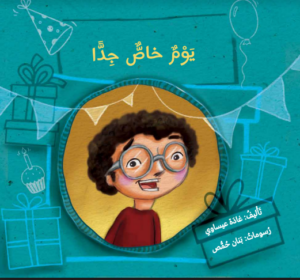 A Very Special Day
A Very Special Day 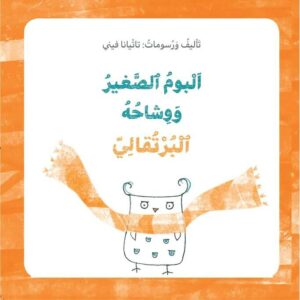 The Small Owl and his Orange Scarf
The Small Owl and his Orange Scarf 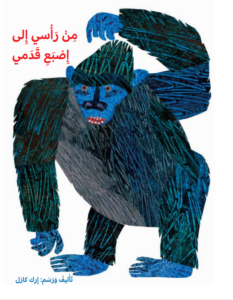 From My Head to My Toe
From My Head to My Toe 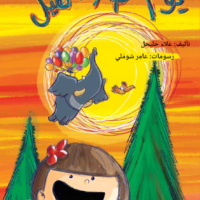 The Day the Elephant Flew
The Day the Elephant Flew 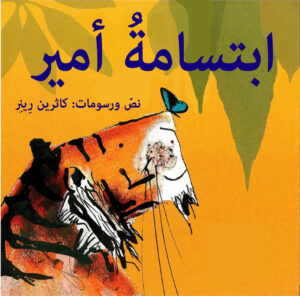 Augustus and His Smile
Augustus and His Smile 
